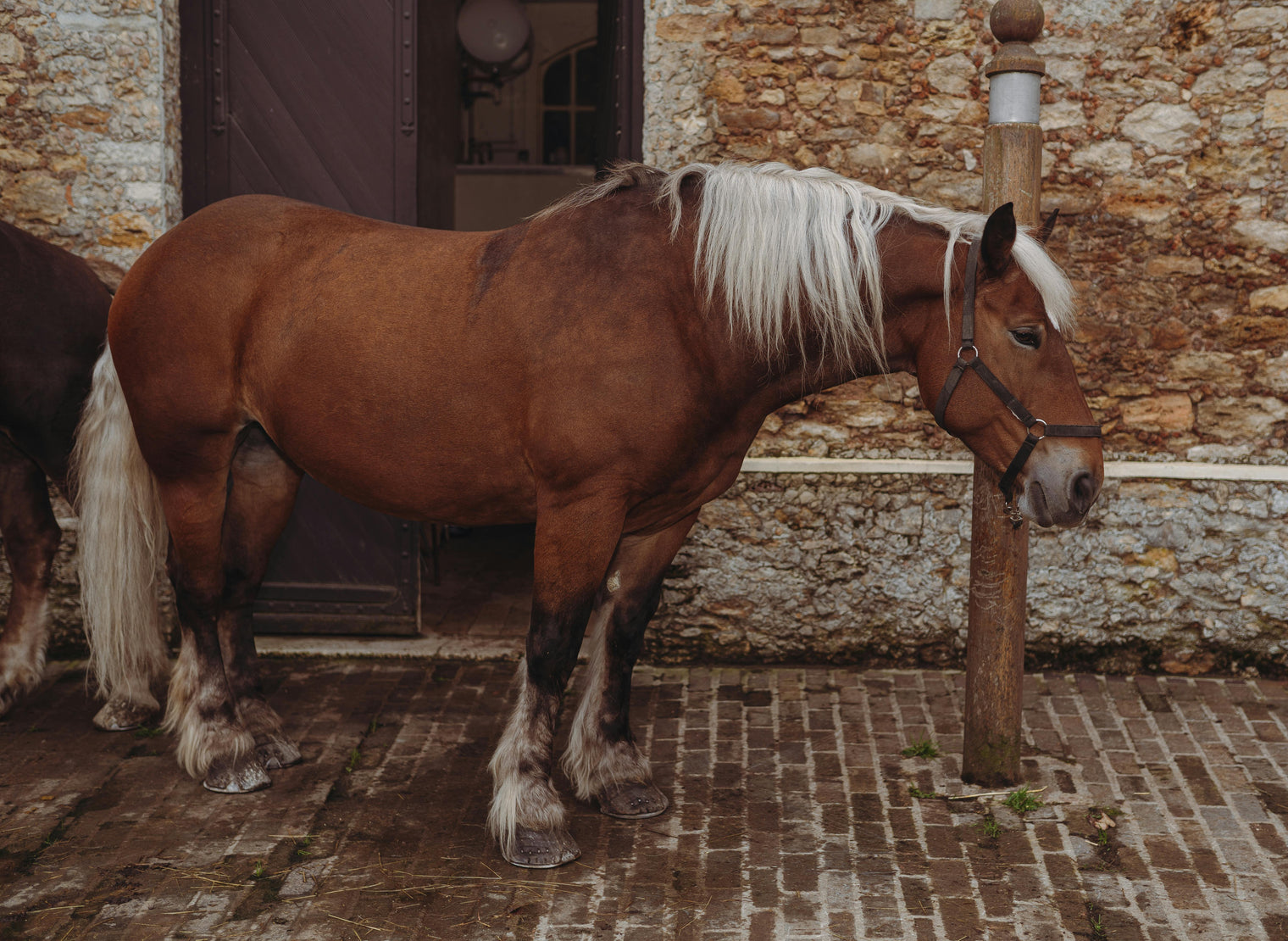If you’ve got a feathered cob or heavy breed, you may have met mallanders and sallanders- those stubborn, waxy scabs that crack, itch and never seem to fully go away. Here’s a practical plan that keeps legs comfortable and coats looking glossy - without guesswork.
If you’ve got a feathered cob or heavy breed, you may have met mallanders and sallanders - those stubborn, waxy scabs that crack, itch and never seem to fully go away. Here’s a practical plan that keeps legs comfortable and coats looking glossy - without guesswork.
What they are (and where they show up)
Mallanders/sallanders are forms of hyperkeratosis- over-production of keratin that leads to thick, scaly, often cracked skin. Typically:
-
Mallanders: behind the knees on forelegs
-
Sallanders: in front of the hocks on hindlegs
-
They’re most common in feathered/heavy breeds and can pick up secondary infection if neglected. There’s no one-shot “cure,” but day-to-day management works.
Management do’s & don’ts (the practical stuff)
Do: gentle, regular cleaning
-
Rinse or wipe to loosen scabs and surface debris; avoid harsh/perfumed soaps that over-dry skin. Keep skin clean and fairly dry, but don’t strip every bit of moisture (over-dry skin cracks).
Do: clip or trim feathers (strategically)
-
Shortening feathers improves visibility, airflow, and makes any mite treatment or creams easier to apply. It won’t fix things alone, but it often speeds results.
Do: manage feather mites if present
-
Chronic irritation from feather mites can worsen mallanders/sallanders. Vets may recommend ivermectin/moxidectin-based protocols; treat in-contact horses and clean grooming kit/bedding to limit re-infestation.
Don’t: pick scabs
-
It hurts, delays healing and invites infection. Soften and let them release with gentle care instead.
Don’t: trap in warm, damp conditions
-
Aim for breathable legs - mud off, feathers tidy, stables well-ventilated. Moisturise lightly to prevent splitting, not to keep the area wet.
When to call the vet (red flags)
-
Heat, swelling or pus/ooze, foul smell
-
Lameness, significant pain, or rapidly worsening cracks
-
You suspect secondary bacterial/fungal infection
-
You need a plan for mites or your horse is miserable despite good management
Vets can advise on medicated washes/creams and antibiotic/antifungal support when indicated.
Nutrition factors that help skin from the inside
Skin is a fast-turnover tissue and relies on balanced vitamins, trace elements and major minerals - plus a calm, supported immune system- to renew well. Keeping starch/sugar sensible and micronutrition steady supports healthy keratinisation and coat quality long-term.
Supplement support: DermaSecret
For year-round skin and coat support, DermaSecret delivers a broad micronutrient base (12 vitamins, 6 trace elements, 4 minerals) in a molasses-free, cereal-free, low-starch formula- ideal for good doers or those prone to metabolic issues. Customers use it to help soften waxy scabs and support healthy keratin turnover as part of a wider routine.
How to use alongside your routine
-
Feed daily; consistency beats intensity.
-
Pair with the do’s above (cleaning, feather management, mite control).
-
Track weekly notes: heat/swelling, comfort, scab thickness, turnout/mud exposure.
Make it effortless: choose Subscribe & Save (10% off + FREE shipping) so you never run out; flexible schedules and easy skips/pauses built in.
Quick-reference routine (save this)
-
Weekly: tidy feathers, check for heat, note changes
-
Every few days: gentle cleanse; moisturise lightly if skin looks too dry
-
As advised by vet: complete mite protocol if needed
-
Daily: balanced forage, turnout where possible, DermaSecret for micronutrient support
Mallanders/sallanders thrive on inconsistency. Keep legs clean and airy, manage mites promptly, don’t pick, and support skin from the inside. Small, steady steps keep your horse comfortable—and your coat photos gleaming.

